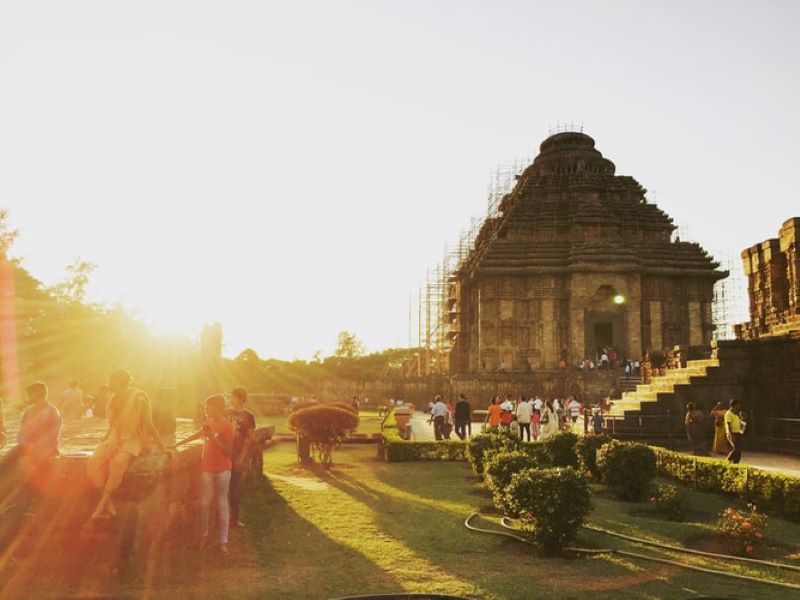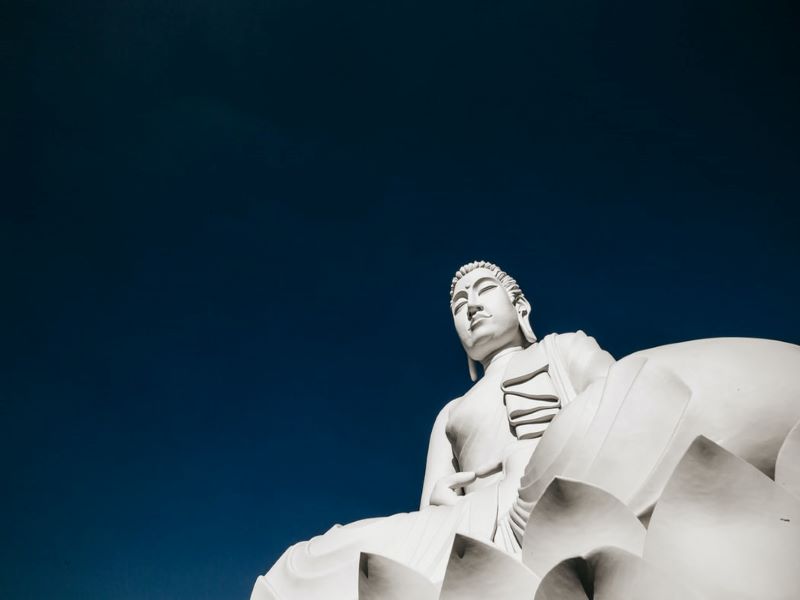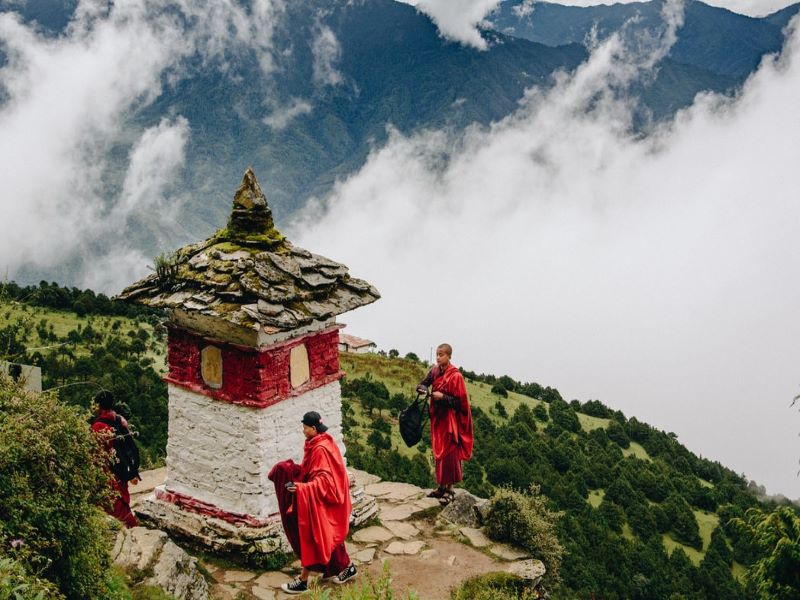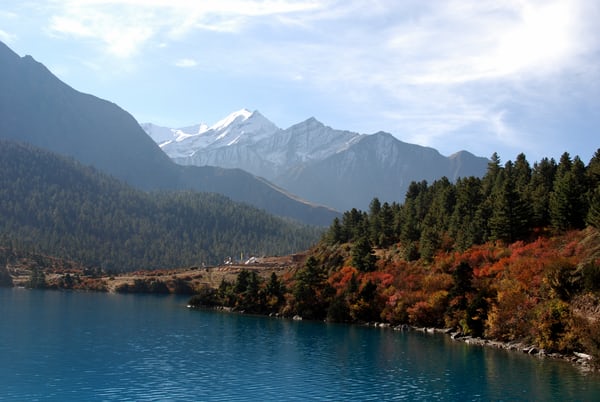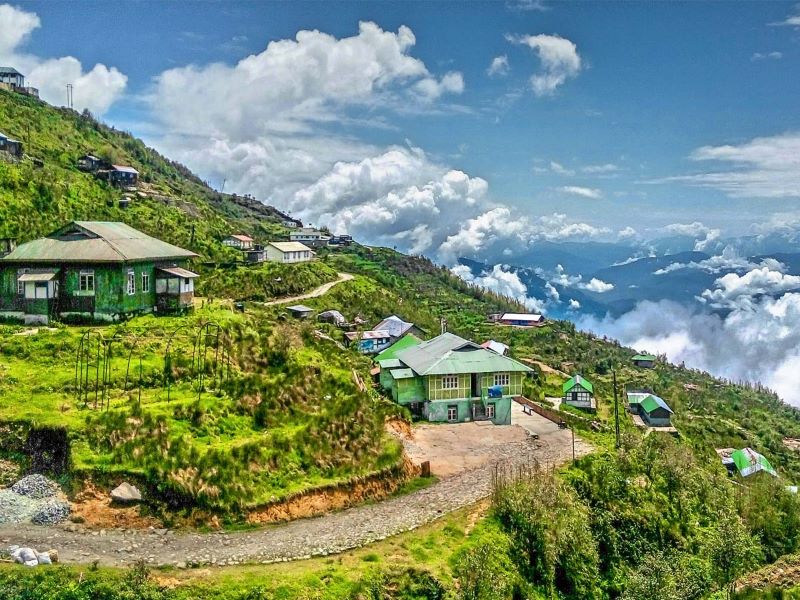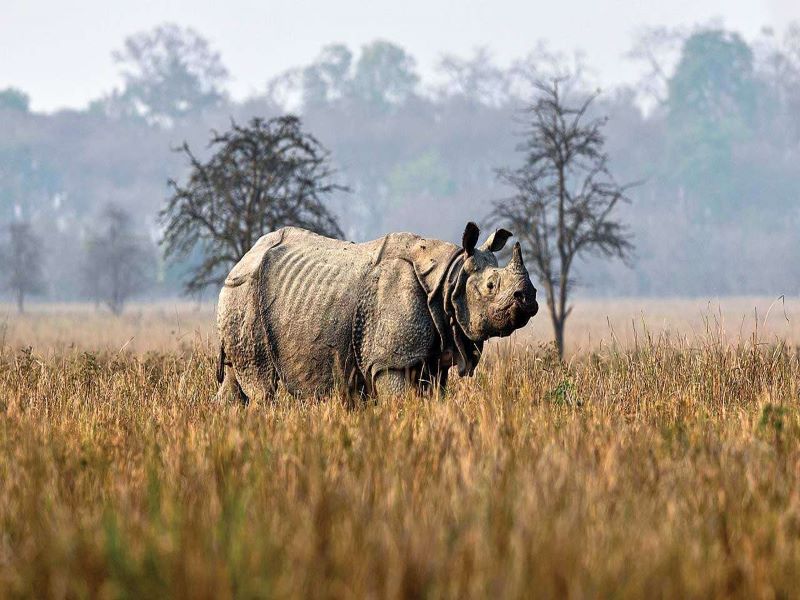- Home
- Tour Packages
East India
-
05 Nights / 06 Days
PLACES IN BHUTAN
THIMPU >> PUNAKHA >> PARO >> PHUENTSHOLING
Best Time To Travel:
The best time to visit Bhutan is during the springtime i.e from March to May when the weather is pleasant and the valleys become lush green with flowers blooming all over. This is the best time to visit Bhutan for sightseeing and other outdoor activities. October to November is also an ideal time to plan a visit to Bhutan as the days are sunny and you can even find snow at higher elevations. Hence, the best seasons to visit Bhutan are autumn and spring when the temperature is balanced, and the skies are clear.
Summer Season in Bhutan
The summer months are June, July, and August. It is the best time to visit Bhutan as these months are the warmest and sunniest, excellent for all the outdoor activities and sightseeing.
Monsoon Season in Bhutan
Though, during the months of June to August, there might be mild showers in the afternoon; but the regions of Bhutan do not experience the monsoon season as such, for the rainfall very rarely.
Winter Season in Bhutan
The winter months (December to February) are impossible to survive properly up in the north if you are coming from a warm climate zone. It keeps getting colder in January and February till the season of spring finally arrives.
Do You Know?
This Secluded kingdom uses a unique barometer to measure economic progress. With his famous declaration in the 1970’s, the former King of Bhutan challenged conventional, narrow, and materialistic notions of human progress. He realized and declared that the existing development paradigm - Gross National Product - did not consider the ultimate goal of every human being: It’s Happiness. The UN Realised its Third World Happiness Report, created in response to a 2011 proposal by Bhutan. Butans economy is growing at a healthy annual rate of 7 % Officials here worry that modern life tends to throw things off-balance and are asking relevant questions to understand the lack of contentment in everyday life.
THINGS YOU COULD DO IN BHUTAN
The Great Himalayan Kingdon replete with Buddist art and adventure activities in the country which prioritizes Gross National Happiness as an indicator for development
Kayaking - The six main rivers of Bhutan and their tributaries provide a variety of courses perfect for kayakers. Enjoy the gentle currents of Paro Valley, Trongsa & Punakha Valley as you take on this adventure sport.
Rafting - Rafting in Bhutan gives you the pleasure to gently float down the river while soaking in the surrounding beauty and moving through some modest yet exhilarating rapids. The rafting route of the Po Chu River with moderate rapids and the rafting route of Mo Chu River is the most popular rafting courses in Bhutan.
Cycling - The Challenging climb and the exhilarating descent, dense mixed forest and lush meadows, traditional villages, and ancient Dzongs makes cycling in Bhutan an amazing way to connect with the unspoiled nature of this land Most cycling tours in Bhutan start in Paro Valley and pass through Thimpu, Dochula, Punakha Valley, Bumthang, and Ura.
Trekking - With the overlooking snow-capped mountains, green valleys, and stunning lakes for company, trekking in Bhutan is a wonderful experience.
Wildlife Safari - Asiatic elephants, Black Bear, Leopards, Tiger, and Golden Langur among other mammals can be seen in their natural habitat in Bhutan
Meditation - Relax in the many meditation and yoga centers spread throughout the kingdom.
-
07 Nights / 08 Days
PLACES IN BHUTAN
THIMPU >> PUNAKHA >> PARO >> PHUENTSHOLING
Best Time To Travel:-
The best time to visit Bhutan is during the springtime i.e from March to May when the weather is pleasant and the valleys become lush green with flowers blooming all over. This is the best time to visit Bhutan for sightseeing and other outdoor activities. October to November is also an ideal time to plan a visit to Bhutan as the days are sunny and you can even find snow at higher elevations. Hence, the best seasons to visit Bhutan are autumn and spring when the temperature is balanced, and the skies are clear.
Summer Season in Bhutan
The summer months are June, July, and August. It is the best time to visit Bhutan as these months are the warmest and sunniest, excellent for all the outdoor activities and sightseeing.
Monsoon Season in Bhutan
Though, during the months of June to August, there might be mild showers in the afternoon; but the regions of Bhutan do not experience the monsoon season as such, for the rainfall very rarely.
Winter Season in Bhutan
The winter months (December to February) are impossible to survive properly up in the north if you are coming from a warm climate zone. It keeps getting colder in January and February till the season of spring finally arrives.
Do You Know?
This Secluded kingdom uses a unique barometer to measure economic progress. With his famous declaration in the 1970’s, the former King of Bhutan challenged conventional, narrow, and materialistic notions of human progress. He realized and declared that the existing development paradigm - Gross National Product - did not consider the ultimate goal of every human being: It’s Happiness. The UN Realised its Third World Happiness Report, created in response to a 2011 proposal by Bhutan. Butans economy is growing at a healthy annual rate of 7 % Officials here worry that modern life trends throw things off-balance and are asking relevant questions to understand the lack of contentment in everyday life.
THINGS YOU COULD DO IN BHUTAN
The Great Himalayan Kingdon replete with Buddist art and adventure activities in the country which prioritizes Gross National Happiness as an indicator for development
Kayaking - The six main rivers of Bhutan and their tributaries provide a variety of courses perfect for kayakers. Enjoy the gentle currents of Paro Valley, Trongsa & Punakha Valley as you take on this adventure sport.
Rafting - Rafting in Bhutan gives you the pleasure to gently float down the river while soaking in the surrounding beauty and moving through some modest yet exhilarating rapids. The rafting route of the Po Chu River with moderate rapids and the rafting route of Mo Chu River is the most popular rafting courses in Bhutan.
Cycling - The Challenging climb and the exhilarating descent, dense mixed forest and lush meadows, traditional villages, and ancient Dzongs makes cycling in Bhutan an amazing way to connect with the unspoiled nature of this land Most cycling tours in Bhutan start in Paro Valley and pass through Thimpu, Dochula, Punakha Valley, Bumthang, and Ura.
Trekking - With the overlooking snow-capped mountains, green valleys, and stunning lakes for company, trekking in Bhutan is a wonderful experience.
Wildlife Safari - Asiatic elephants, Black Bear, Leopards, Tiger, and Golden Langur among other mammals can be seen in their natural habitat in Bhutan.
Meditation - Relax in the many meditation and yoga centers spread throughout the kingdom.
-
08 Nights / 09 Days
PLACES IN NORTH-EAST
DARJEELING >> GANGTOK >> PELLING >> LACHUNG >> KALIMPONG >> YUMTHANG VALLEY >> BAGDOGRA
Best Time To Travel
(October to February)
Temperature – The air temperature during the season of winter fluctuates between 0°C and 22°C.
Weather – The weather of North East India in winter ranges from chilly to biting cold, depending upon the State in question. Higher altitude regions such as Arunachal Pradesh and Sikkim drop to sub-zero temperatures, with accompanying snowfall and icy landscapes. Lower altitude regions such as Mizoram and Tripura are blessed with mild winters that exude pleasant temperatures and enable you to navigable plains. In general, this season sparkles with crisp air and a rejuvenating atmosphere.
North East in Summer (March to June)
Temperature – The air temperature during the season of summer fluctuates between 10°C and 38°C.
Weather – The climate of North East India during summer is variable. It ranges from cool to scorching, depending upon the region and elevation. While the northern-most parts face pleasant and friendly summers, the lower altitude regions can get particularly hot. All in all, this period is considered to be the best climate to visit North East India in, due to its crystal-clear skies, amber sunshine, and blooming flora!
North East in Monsoon (July to September)
Temperature – The air temperature during the season of monsoon fluctuates between 9°C and 35°C.
Weather – North East India during monsoon is a tropical affair. Rainfall ranges from moderate to heavy, while temperatures vary from hot to cold. The climate is contingent upon the state in question. Higher altitude regions experience chilly weather while regions closer to the equator remain balmy. From stickiness to freshness, monsoon dons many hats. In general, the atmosphere is friendly and the landscapes are lush and plush.
Do You Know?
Over 4,000 different flowering plants, 300 varieties of ferns, and tons of wildlife can be found here. Monkeys, elephants, wild cats, and even endangered red pandas are all native to the area as well. And yes, you can see these adorable little creatures in person at the Padmaja Naidu Himalayan Zoo, a favorite Darjeeling attraction
Some of the finest teas in the world are produced in Darjeeling. Darjeeling tea is a light- to medium-bodied black tea that is highly aromatic with fruity and floral tones. And true Darjeeling tea is only grown in this specific area of West Bengal, on just 87 estates.
Every year Gangtok hosts the International Flower Festival which attracts tourists from all over the world. The entire city is wrapped in bright colors and hues of the different varieties of orchids, roses, alpine creepers, and seasonal flowers. The Flower Festival begins with the Orchid Show in March where the flowers are displayed in a large glasshouse at the Flower Exhibition Centre.
The pleasant little town of Pelling is famous for magnificent views of the snow-capped Kanchenjunga range, the third-highest peak in the world. Pelling is about 130 km away from Siliguri and 115km from Gangtok, the capital of Sikkim, and is well connected by bus and jeep services. The Placid town pulls most of the visitors for its representative status in history, nature, and culture of the state of Sikkim.
Things You could do in East India
Covered in dense ageless forests, the eastern states are the epitome of rugged beauty. Experience the ingenuity of tribal lives and loosen yourself in the many natural wonders.
River Rafting - Dawki in Shillong, the Teesta River, The Jia Bhorali River in Nameri National Park all present an exhilarating white water rafting experience for thrill-seekers.
Silk Village Tour - Indulge in an exciting tour of the Silk Village at Umden in Meghalaya and get acquainted with the Bhoi people to learn about their culture and history.
Yak Safari - Riding on a Yak has been the favored form of transportation for the locals. Yaks have the tenacity and balance to traverse ascents of any difficulty. Some of the best places to go for a Yak Safari are on the fringes of Tsomgo Lake or the Yak Trails of the Dzongri area. The best Yak Safaris take place in the Chota Valley where you can witness the bewitching beauty of nature.
Visit Tea Gardens - Darjeeling and Dibrugarh in Assam are famous for their sprawling tea gardens. Relax in the Aura of its fragrant leaves as you treat your taste buds to the finest quality of tea you could have. Also known as the Tea city of India; this is the town of Assam is the largest tea producing town in the world.
Wildlife - The only natural home to the endangered One - Horned Rhinoceros in the world, Kaziranga Wildlife Sanctuary is one oldest and most stunning range of wildlife.
Watch a Boat Ride - Sualkuchi is a small town in Assam that is known for its rich cultural heritage. Delight in the competitive spirit of the locals as they row away to win your hearts.
Visit Majuli - Majuli is surrounded by the mighty Brahmaputra and is known for its vibrant cultures and traditions. Home to the natives called ‘ Misings’; the freshwater islands are in fact the largest river island in the world
-
08 Nights / 09 Days
PLACES IN NORTH-EAST
DARJEELING >> GANGTOK >> PELLING >> LACHUNG >> KALIMPONG >> YUMTHANG VALLEY >> BAGDOGRA
Best Time To Travel
(October to February)
Temperature – The air temperature during the season of winter fluctuates between 0°C and 22°C.
Weather – The weather of North East India in winter ranges from chilly to biting cold, depending upon the State in question. Higher altitude regions such as Arunachal Pradesh and Sikkim drop to sub-zero temperatures, with accompanying snowfall and icy landscapes. Lower altitude regions such as Mizoram and Tripura are blessed with mild winters that exude pleasant temperatures and enable you to navigable plains. In general, this season sparkles with crisp air and a rejuvenating atmosphere.
North East in Summer (March to June)
Temperature – The air temperature during the season of summer fluctuates between 10°C and 38°C.
Weather – The climate of North East India during summer is variable. It ranges from cool to scorching, depending upon the region and elevation. While the northern-most parts face pleasant and friendly summers, the lower altitude regions can get particularly hot. All in all, this period is considered to be the best climate to visit North East India in, due to its crystal-clear skies, amber sunshine, and blooming flora!
North East in Monsoon (July to September)
Temperature – The air temperature during the season of monsoon fluctuates between 9°C and 35°C.
Weather – North East India during monsoon is a tropical affair. Rainfall ranges from moderate to heavy, while temperatures vary from hot to cold. The climate is contingent upon the state in question. Higher altitude regions experience chilly weather while regions closer to the equator remain balmy. From stickiness to freshness, monsoon dons many hats. In general, the atmosphere is friendly and the landscapes are lush and plush.
Do You Know?
Over 4,000 different flowering plants, 300 varieties of ferns, and tons of wildlife can be found here. Monkeys, elephants, wild cats, and even endangered red pandas are all native to the area as well. And yes, you can see these adorable little creatures in person at the Padmaja Naidu Himalayan Zoo, a favorite Darjeeling attraction
Some of the finest teas in the world are produced in Darjeeling. Darjeeling tea is a light- to medium-bodied black tea that is highly aromatic with fruity and floral tones. And true Darjeeling tea is only grown in this specific area of West Bengal, on just 87 estates.
Every year Gangtok hosts the International Flower Festival which attracts tourists from all over the world. The entire city is wrapped in bright colors and hues of the different varieties of orchids, roses, alpine creepers, and seasonal flowers. The Flower Festival begins with the Orchid Show in March where the flowers are displayed in a large glasshouse at the Flower Exhibition Centre.
The pleasant little town of Pelling is famous for magnificent views of the snow-capped Kanchenjunga range, the third-highest peak in the world. Pelling is about 130 km away from Siliguri and 115km from Gangtok, the capital of Sikkim, and is well connected by bus and jeep services. The Placid town pulls most of the visitors for its representative status in history, nature, and culture of the state of Sikkim.
Things You could do in East India
Covered in dense ageless forests, the eastern states are the epitome of rugged beauty. Experience the ingenuity of tribal lives and loosen yourself in the many natural wonders.
River Rafting - Dawki in Shillong, the Teesta River, The Jia Bhorali River in Nameri National Park all present an exhilarating white water rafting experience for thrill-seekers.
Silk Village Tour - Indulge in an exciting tour of the Silk Village at Umden in Meghalaya and get acquainted with the Bhoi people to learn about their culture and history.
Yak Safari - Riding on a Yak has been the favored form of transportation for the locals. Yaks have the tenacity and balance to traverse ascents of any difficulty. Some of the best places to go for a Yak Safari are on the fringes of Tsomgo Lake or the Yak Trails of the Dzongri area. The best Yak Safaris take place in the Chota Valley where you can witness the bewitching beauty of nature.
Visit Tea Gardens - Darjeeling and Dibrugarh in Assam are famous for their sprawling tea gardens. Relax in the Aura of its fragrant leaves as you treat your taste buds to the finest quality of tea you could have. Also known as the Tea city of India; this is the town of Assam is the largest tea producing town in the world.
Wildlife - The only natural home to the endangered One - Horned Rhinoceros in the world, Kaziranga Wildlife Sanctuary is one oldest and most stunning range of wildlife.
Watch a Boat Ride - Sualkuchi is a small town in Assam that is known for its rich cultural heritage. Delight in the competitive spirit of the locals as they row away to win your hearts.
Visit Majuli - Majuli is surrounded by the mighty Brahmaputra and is known for its vibrant cultures and traditions. Home to the natives called ‘ Misings’; the freshwater islands are in fact the largest river island in the world
-
06 Nights / 07 Days
PLACES IN NORTH-EAST
SHILLONG >> CHERRAPUNJEE >> KAZIRANGA >> GUWAHATI >> DARJEELING >> GANGTOK >> PELLING >> LACHUNG >> KALIMPONG >> YUMTHANG VALLEY >> BAGDOGRA
Best Time To Travel
(October to February)
Temperature – The air temperature during the season of winter fluctuates between 0°C and 22°C.
Weather – The weather of North East India in winter ranges from chilly to biting cold, depending upon the State in question. Higher altitude regions such as Arunachal Pradesh and Sikkim drop to sub-zero temperatures, with accompanying snowfall and icy landscapes. Lower altitude regions such as Mizoram and Tripura are blessed with mild winters that exude pleasant temperatures and enable you to navigable plains. In general, this season sparkles with crisp air and a rejuvenating atmosphere.
North East in Summer (March to June)
Temperature – The air temperature during the season of summer fluctuates between 10°C and 38°C.
Weather – The climate of North East India during summer is variable. It ranges from cool to scorching, depending upon the region and elevation. While the northern-most parts face pleasant and friendly summers, the lower altitude regions can get particularly hot. All in all, this period is considered to be the best climate to visit North East India in, due to its crystal-clear skies, amber sunshine, and blooming flora!
North East in Monsoon (July to September)
Temperature – The air temperature during the season of monsoon fluctuates between 9°C and 35°C.
Weather – North East India during monsoon is a tropical affair. Rainfall ranges from moderate to heavy, while temperatures vary from hot to cold. The climate is contingent upon the state in question. Higher altitude regions experience chilly weather while regions closer to the equator remain balmy. From stickiness to freshness, monsoon dons many hats. In general, the atmosphere is friendly and the landscapes are lush and plush.
Do You Know?
Over 4,000 different flowering plants, 300 varieties of ferns, and tons of wildlife can be found here. Monkeys, elephants, wild cats, and even endangered red pandas are all native to the area as well. And yes, you can see these adorable little creatures in person at the Padmaja Naidu Himalayan Zoo, a favorite Darjeeling attraction
Some of the finest teas in the world are produced in Darjeeling. Darjeeling tea is a light- to medium-bodied black tea that is highly aromatic with fruity and floral tones. And true Darjeeling tea is only grown in this specific area of West Bengal, on just 87 estates.
Every year Gangtok hosts the International Flower Festival which attracts tourists from all over the world. The entire city is wrapped in bright colors and hues of the different varieties of orchids, roses, alpine creepers, and seasonal flowers. The Flower Festival begins with the Orchid Show in March where the flowers are displayed in a large glasshouse at the Flower Exhibition Centre.
The pleasant little town of Pelling is famous for magnificent views of the snow-capped Kanchenjunga range, the third-highest peak in the world. Pelling is about 130 km away from Siliguri and 115km from Gangtok, the capital of Sikkim, and is well connected by bus and jeep services. The Placid town pulls most of the visitors for its representative status in history, nature, and culture of the state of Sikkim.
Things You could do in East India
Covered in dense ageless forests, the eastern states are the epitome of rugged beauty. Experience the ingenuity of tribal lives and loosen yourself in the many natural wonders.
River Rafting - Dawki in Shillong, the Teesta River, The Jia Bhorali River in Nameri National Park all present an exhilarating white water rafting experience for thrill-seekers.
Silk Village Tour - Indulge in an exciting tour of the Silk Village at Umden in Meghalaya and get acquainted with the Bhoi people to learn about their culture and history.
Yak Safari - Riding on a Yak has been the favored form of transportation for the locals. Yaks have the tenacity and balance to traverse ascents of any difficulty. Some of the best places to go for a Yak Safari are on the fringes of Tsomgo Lake or the Yak Trails of the Dzongri area. The best Yak Safaris take place in the Chota Valley where you can witness the bewitching beauty of nature.
Visit Tea Gardens - Darjeeling and Dibrugarh in Assam are famous for their sprawling tea gardens. Relax in the Aura of its fragrant leaves as you treat your taste buds to the finest quality of tea you could have. Also known as the Tea city of India; this is the town of Assam is the largest tea producing town in the world.
Wildlife - The only natural home to the endangered One - Horned Rhinoceros in the world, Kaziranga Wildlife Sanctuary is one oldest and most stunning range of wildlife.
Watch a Boat Ride - Sualkuchi is a small town in Assam that is known for its rich cultural heritage. Delight in the competitive spirit of the locals as they row away to win your hearts.
Visit Majuli - Majuli is surrounded by the mighty Brahmaputra and is known for its vibrant cultures and traditions. Home to the natives called ‘ Misings’; the freshwater islands are in fact the largest river island in the world
Government Authorised
Copyright © 2025 Charis Enterprises. All Rights Reserved. Powered by Itarsia India Limited

